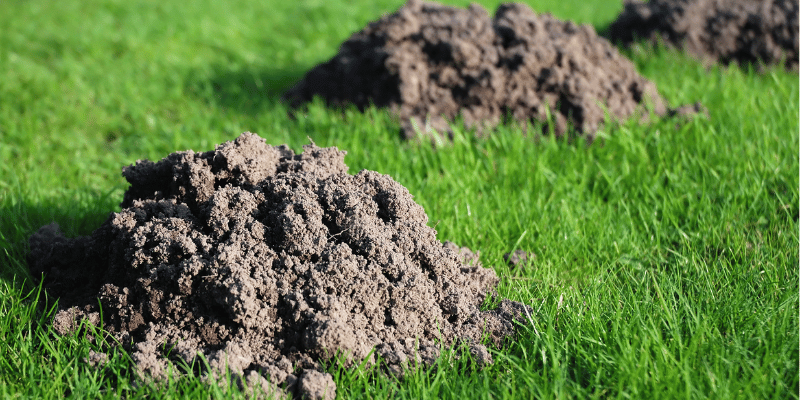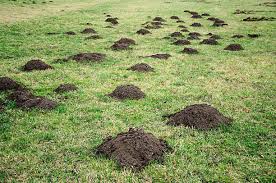Do Moles Hibernate?
If you’ve ever noticed that the moles in your yard seem to vanish for a period of time and then reappear, you might have wondered: Do moles hibernate? It’s a common question, especially for homeowners who may be dealing with mole activity during certain times of the year. Understanding the behavior of these underground creatures can help you better manage mole infestations and plan your yard care. So, let’s dig into the truth about moles and their seasonal habits.
Understanding Mole Behavior
Moles are small, burrowing mammals that are highly adapted to life underground. They are most well-known for their ability to create extensive tunnel systems in search of food, primarily insects like earthworms, grubs, and beetles. Moles have a high metabolism and require a constant food supply to maintain their energy levels. Because of this, many people assume that moles would naturally hibernate in winter to conserve energy. However, this is not quite the case.
Do Moles Hibernate?
The short answer is: No, moles do not truly hibernate. Unlike some animals that enter a deep, energy-conserving dormancy during the colder months (such as bears or certain rodents), moles remain active year-round.
Why Moles Don’t Hibernate
Constant Need for Food: Moles don’t hibernate because they need to keep feeding. Their diet consists mostly of insects, which are available year-round, even in winter, depending on the climate. Moles rely on a constant supply of earthworms, insects, and other small invertebrates found in the soil. While the activity levels of some of these food sources may decrease in colder weather, moles can continue to find food in their subterranean tunnels. Their specialized, sensitive noses help them detect prey, even in cold conditions.
Adaptability to Cold Weather: Moles are well-equipped to survive through colder temperatures. Their fur is dense and velvety, offering some insulation. Additionally, moles burrow deep enough into the ground that they can avoid the most severe surface frost. Soil temperatures below the surface remain more stable, allowing moles to continue their underground activities despite the seasonal changes above ground.
Mole Activity Year-Round: While moles may slow down a bit during extremely cold weather, they do not hibernate in the strict sense. Instead, they reduce their activity levels in winter but remain on the move. During colder months, moles often dig deeper into the soil in search of food or more temperate environments. In some regions with harsh winters, you may notice that mole activity seems to slow, but it rarely stops entirely.
How Moles Survive the Winter
During the colder months, moles adjust their behavior rather than entering full hibernation. In fall, they prepare by digging deeper tunnels below the frost line where the soil temperature remains relatively constant. These deeper tunnels provide a more stable environment for the mole to continue its search for food.
However, even in winter, moles are still in search of nourishment. They rely on earthworms, which remain active underground, although in reduced numbers. Moles are also known to feed on other insects and the larvae of beetles and other pests that are abundant in the soil year-round.
What This Means for Homeowners
As a homeowner, understanding that moles don’t hibernate can be crucial when dealing with mole problems in your yard. While it may seem like mole activity slows in the winter, it’s important to remember that moles are still at work, digging tunnels and causing damage to your lawn or garden. In fact, if you’ve noticed mole activity during the winter months, it may be more difficult to manage since their underground tunnels can be harder to track.
Increased Damage in Spring: Since moles don’t hibernate, they can still be active during the winter, causing tunnel damage. In spring, the snow melts, and any moles that were digging throughout the winter will leave visible signs of their activity. This can lead to more noticeable damage to your lawn, garden, or landscape.
Year-Round Control: If you’re dealing with moles in your yard, you’ll need to implement a year-round control strategy, especially if you live in an area with mild winters. While moles may slow down slightly in cold months, they are unlikely to stop entirely, and their tunnels can continue to wreak havoc on your landscaping. For more effective management, it’s best to contact a professional mole control service, like Got Moles, to help prevent the spread of their tunnels and reduce damage to your property.
Mole Control and Prevention
Understanding the behavior of moles can make it easier to deal with an infestation. Here are some tips to help reduce mole activity:
Eliminate Food Sources: Moles are attracted to lawns and gardens rich in insects and grubs. Using pest control treatments that target the larvae of grubs can make your yard less attractive to moles.
Create Barriers: Installing physical barriers, such as underground fences or mesh, can prevent moles from tunneling into your garden or yard.
Professional Help: If you’re facing a persistent mole problem, it may be wise to consult with professionals. Got Moles specializes in mole control, using effective, humane methods to help eliminate mole infestations and prevent further damage to your property.
Moles do not hibernate in the traditional sense. Instead, they continue to be active year-round, adjusting their behavior to adapt to the colder months. While their food sources may slow down, moles remain on the hunt for nourishment and continue to dig their tunnels. This means homeowners need to be vigilant and proactive throughout the entire year, including winter, when it comes to mole control.
If you’re dealing with persistent mole problems, reach out to a professional service like Got Moles for assistance. We can help you manage and prevent mole infestations, ensuring that your yard remains mole-free throughout the seasons.




